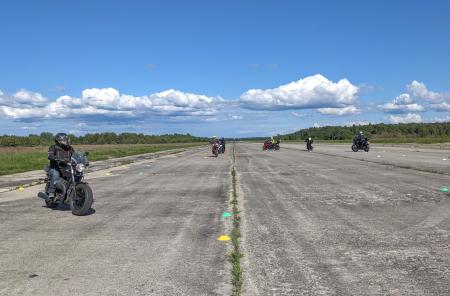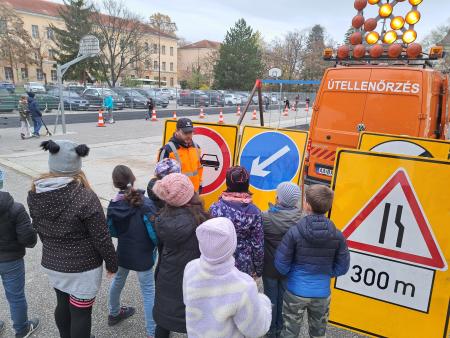Our members are dedicated to improving road safety and sharing their knowledge with the wider community. Here, you can explore our members' good practices – initiatives that have been assessed for their effectiveness in addressing a road safety problem and have proven results.
Get inspired – and sign up to share your good practices too!

Sunday, June 16, 2024
Motorcycle drivers are often involved in accidents or the outcome is worsened because of lack of skills. Our goal is to improve the skills and techniques of everyday motorcycle riders to better handle emergency situations and/or prevent driving off the road. The amount of driving lessons in driving schools is not sufficient and the quality varies. Also, there are plenty of riders who got their license a long time ago where the training was non-existent. Fortunately the situation is getting better but is still far from perfect.

Sunday, June 16, 2024
The main road safety challenge was enforcement of the current European & National legislations.
The install of Vision Heroes Lighting Kit enhances the rear of an LCV (trailers with drop sides or pick up units with drop sides) it greatly improves the presence of units parked with the Original equipped (O/E) rear lamps lit* and the rear doors open to 90’.
This includes rear taillights, Turn Signal & Hazzard’s which are all incorporated within the O/E Lamps.
The install of Vision Heroes Lighting Kit enhances the rear of an LCV (trailers with drop sides or pick up units with drop sides) it greatly improves the presence of units parked with the Original equipped (O/E) rear lamps lit* and the rear doors open to 90’.
This includes rear taillights, Turn Signal & Hazzard’s which are all incorporated within the O/E Lamps.

Sunday, June 16, 2024
From the first of September 2022, MKIF Magyar Koncessziós Infrastruktursa Fejlsztó Zrt took over the operation, maintenance and development of 1,237 km of existing Hungarian expressways.
When analyzing the accidents recorded by our traffic surveillance cameras on domestic expressways, we noticed that it is important to draw attention to traffic safety in our communication (keeping a following distance, observing the speed limit near work areas, protecting our colleagues, early education of children/young adults in safe traffic) and traffic -culture (littering, driving in an egoistic style that endangers others, early education of children/young adults on responsible driving).
When analyzing the accidents recorded by our traffic surveillance cameras on domestic expressways, we noticed that it is important to draw attention to traffic safety in our communication (keeping a following distance, observing the speed limit near work areas, protecting our colleagues, early education of children/young adults in safe traffic) and traffic -culture (littering, driving in an egoistic style that endangers others, early education of children/young adults on responsible driving).

Sunday, June 16, 2024
In Vienna most parents are afraid to cycle with their kids on the streets because of the lack of proper and continuous infrastructure for bikes. This degenerates the ability of children in Vienna generally reaching an all time low of 17% of children taking a biking license and having over 50% of them fail in the exam due to lack of skill and practical knowledge about road behavior. This further decreases the biking competency of children in secondary school as they don’t have any motivation whatsoever to actually learn biking at a later age. With only 20 km per year of safe biking infrastructure generated and a need for over 300km this creates a gap of centuries while parents wait for safe infrastructure during which biking competencies further deteriorate. the bikebus (Bicibus) provides a method to engage children at the right age to motivate them for biking and educates parents by practicing and by positive example to actually provide a learning opportunity to children, when they actually are prone to learn biking seriously (5-10) This prepares their technical skills so they are ready, when their actual physiology is ready to safely travel through urban traffic alone even without safe infrastructure yet in place.

Sunday, June 16, 2024
We are addressing road safety for motorcyclists safety and innovative, pragmatic infrastructure solutions, that are working and can be applied on the roads, mainly for pro-active approach, and as well as active (passive safe).